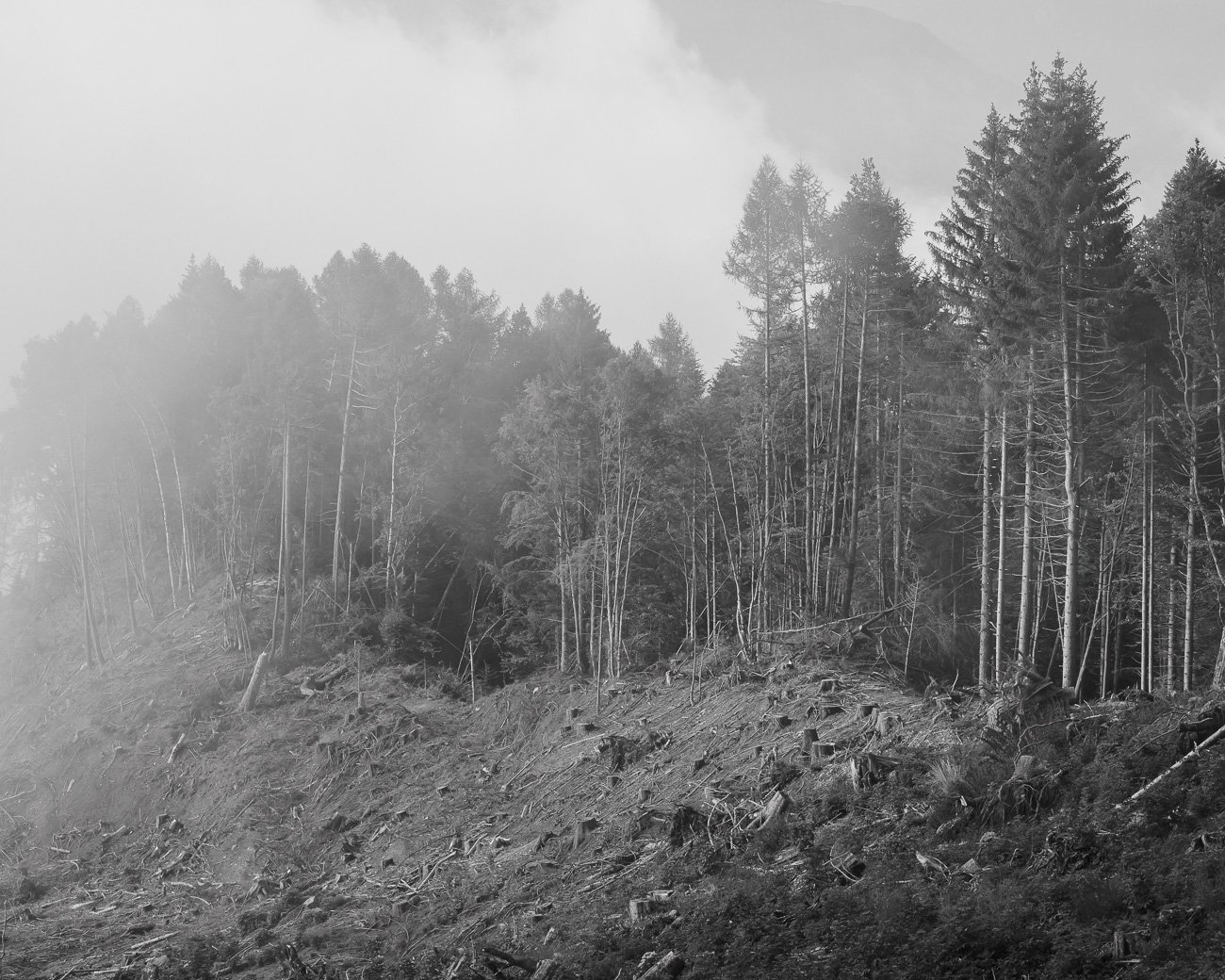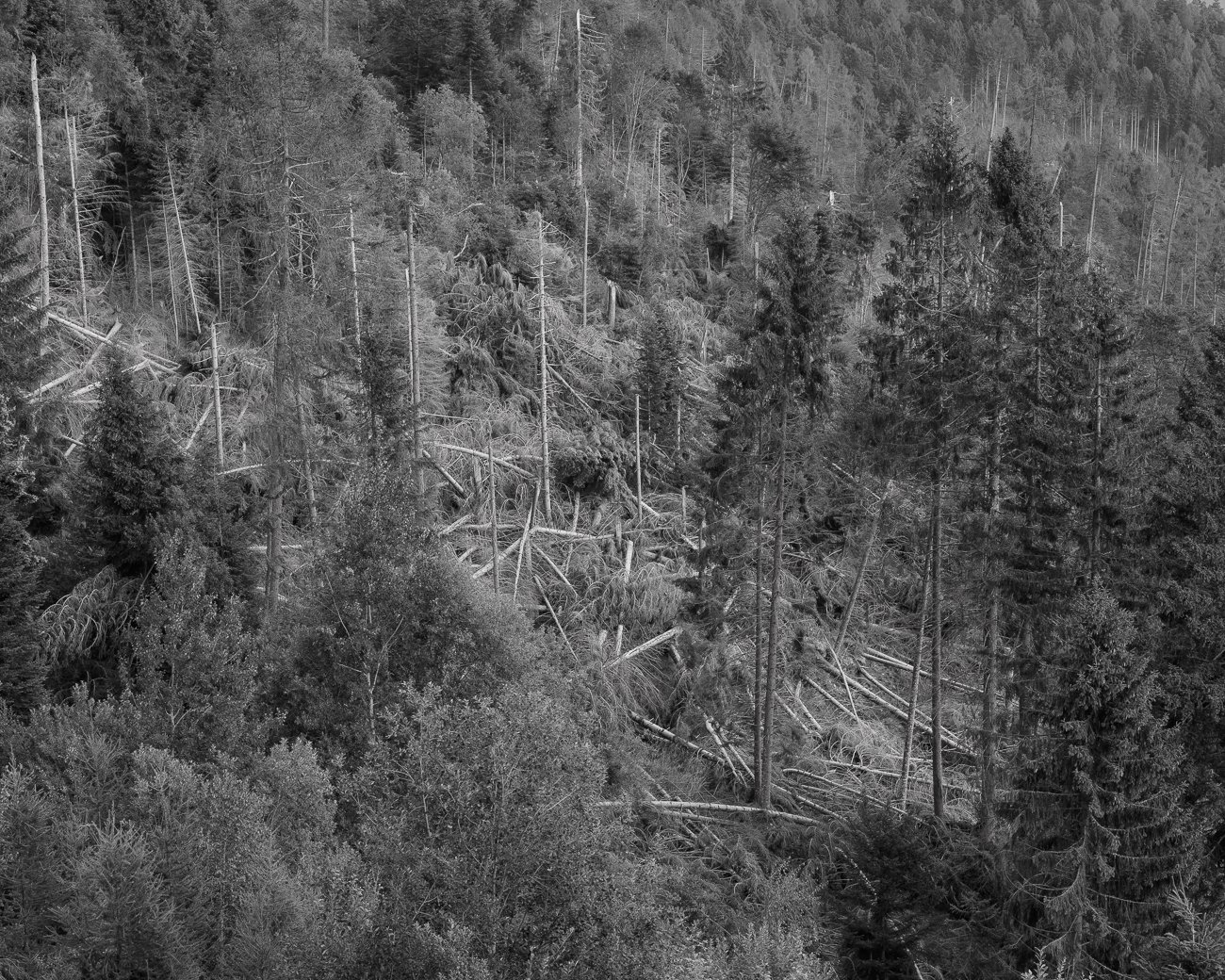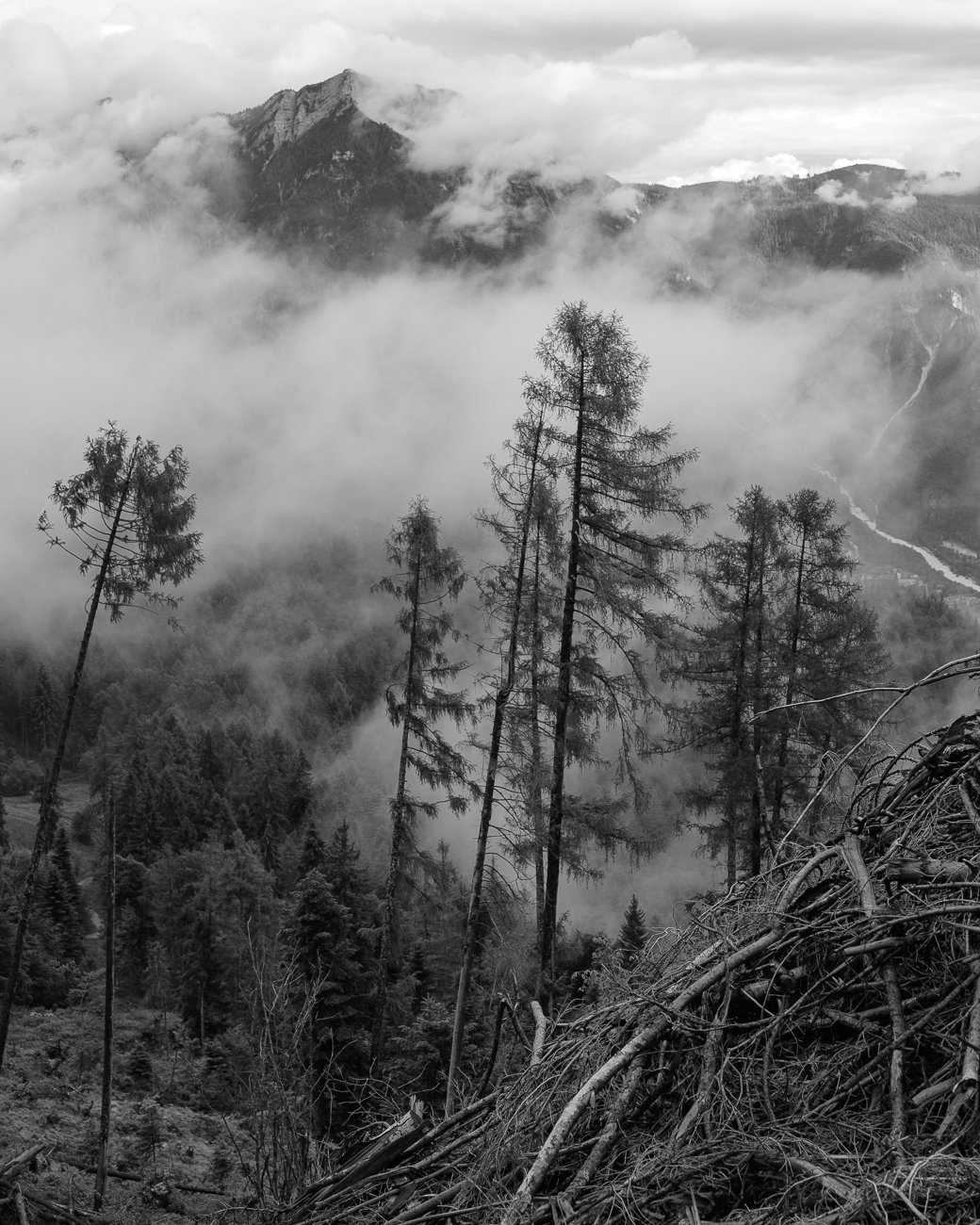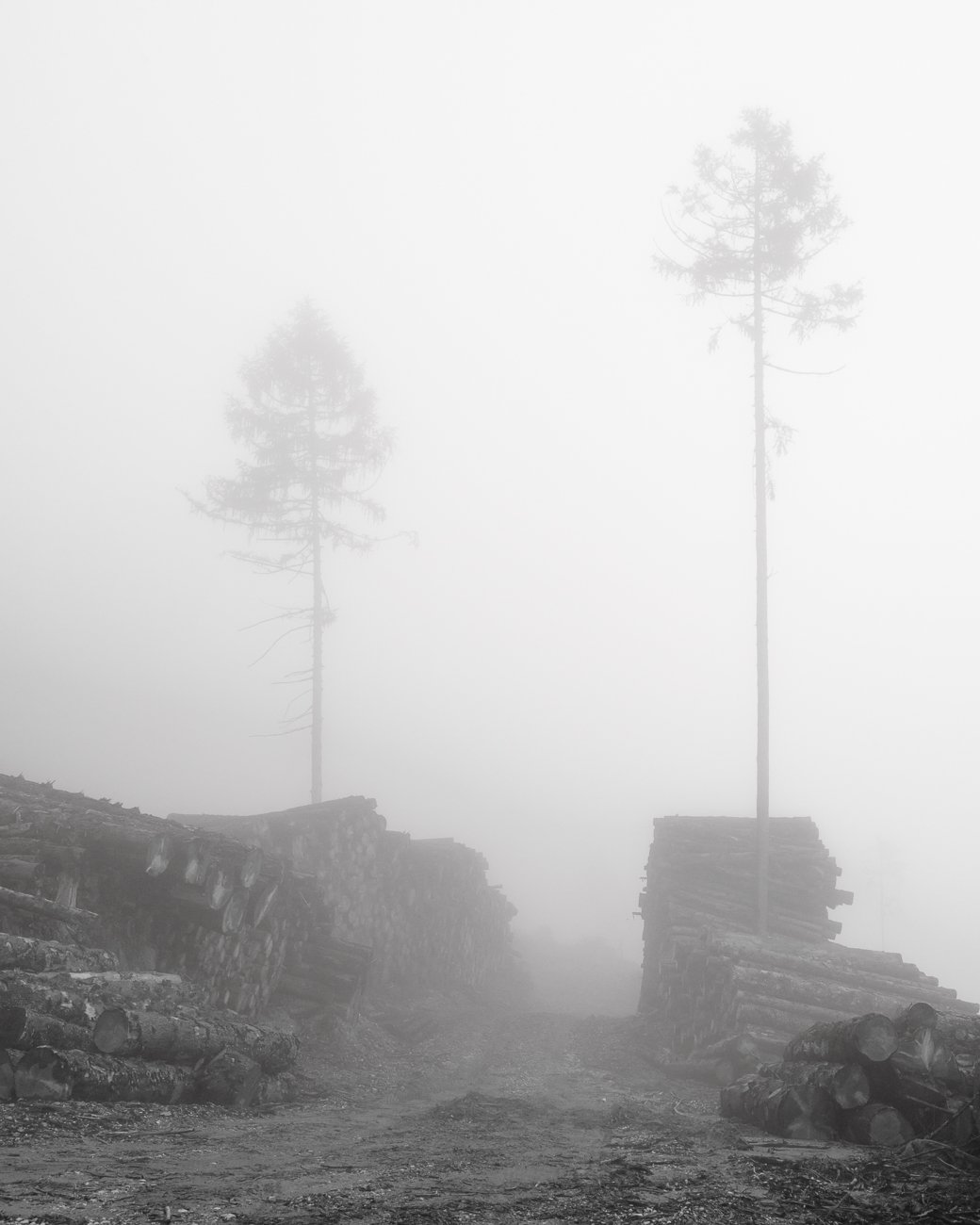VAIA| STORM FORCE
On the night of 28th October 2018 the North East of Italy was hit by the most damaging windstorm in its recorded history. Gusts of over 190km/h roared through forests and slammed into mountainsides. An estimated 30+ million trees were uprooted, and the disruption caused over €3 billion worth of damage, all in under 24 hours. The damage was not restricted to the physical landscape, Vaia has also created direct and indirect socioeconomic challenges on a local and national scale.
This collection of photographs explores the physical damage caused to just one mountainside area of Trentino, and the human role in the tidy up operation.
A VISUAL LAMENT
I’ve visited this area many times, before and after Storm Vaia. The first trip after Vaia was a real shock to the system. Whilst it’s commonplace to underestimate the raw power of Mother Nature at her most furious, the utter chaos caused was hard to comprehend. Photographically speaking my first instinct was to simply document the destruction, it was a form of lament.
The more I explored, the more the scope of destruction became overwhelming. In just one small area there was chaos on a grand scale, multiplied thousands of times over many areas it was arresting how much damage could be caused in just a few hours. Whilst this was a natural event it’s also well documented that the severity of these storms has been (and will continue to be) increased by human-induced climate change. According to the IPCC’s 6th assessment report it is an “established fact” that human-caused greenhouse gas emissions have “led to an increased frequency and/or intensity of some weather and climate extremes since pre-industrial times”.
SCARS ON THE LANDSCAPE
The estimated loss of over 30 million trees caused by Vaia is a hard number to make sense of. For some comparison it’s worth knowing the Woodland Trust have planted just 50 million trees in their entire history since 1972. In just under 24hrs Storm Vaia had a massive impact compared to 50 years of focussed tree planting efforts.
This isn’t the first time this area of Trentino has seen scars inflicted on its landscape. As the former border between Austria and Italy the area saw man-made devastation during the Great War of 1914-1918. Many young lives were lost with soldiers succumbing to the treacherous conditions and ongoing shelling. These mountains have been home to the fallen before.
ECONOMIC & ECOLOGICAL IMPACTS
The cost of Storm Vaia has so far exceeded €3 billion. A huge part of this cost has been the clean-up operation which as of Summer2023 is still ongoing - nearly 5 years later. The immediate work was to ensure the fallen trees didn’t cause further damage to life or property. Since then, it’s been a massive operation that has seen specialists coming from various European countries to assist in the tidy up.
From an economic point of view the sudden and immediate impact of a vast overstock of timber crashed the market prices. The authorities were forced to step-in and various schemes were put in place to mitigate this financial impact. The actual quality of the lumber, and thus price it can attract, declines the longer it has been felled. As such there was a major scramble at the outset to retain value.
Not only does time affect the timber value but also the knock-on impact to the local forest ecosystems. Fallen wood that is left too long (over 6 months) can lead to issues with bark beetles and other bugs that can infest and spread disease on the forest floor and in the still standing trees. As such there were many teams of forestry personnel tasked with clearing timber at a never seen before rate.
VISUALS OF THE HUMAN TOUCH
Many of us have seen images of direct human impact on forest clearance and logging. Visually we often jump to negative conclusions about the ‘touch’ of man in these images. During my explorations of the area after Vaia I was keen to understand the role of humans in the causes and aftermath of the storm, both positive and negative.
As stated earlier the science is now clear that the severity of these storm events has been increased by human-caused climate change. So, in many ways we have ‘assisted’ the impact of the storm. Going forward scientists agree that this assistance will only increase as global climate change increases both the severity and frequency of extreme weather events. The resulting damage causes huge financial impacts and require human interventions to clear up and resolve.
The reality is that national infrastructures are woefully under prepared for what is coming. The summer of 2021 saw devastating floods in Germany, the clean-up operation there is also ongoing and will cost many billions of Euros. What is clear is that more of these extreme weather events will happen, causing more damage, costing more money, and requiring more resources. Hopefully Vaia and the like will help focus minds at an international level to highlight the impacts (financially and ecologically) caused by the path we are currently walking.
TALKS
TUITION & TOURS
BLOG























